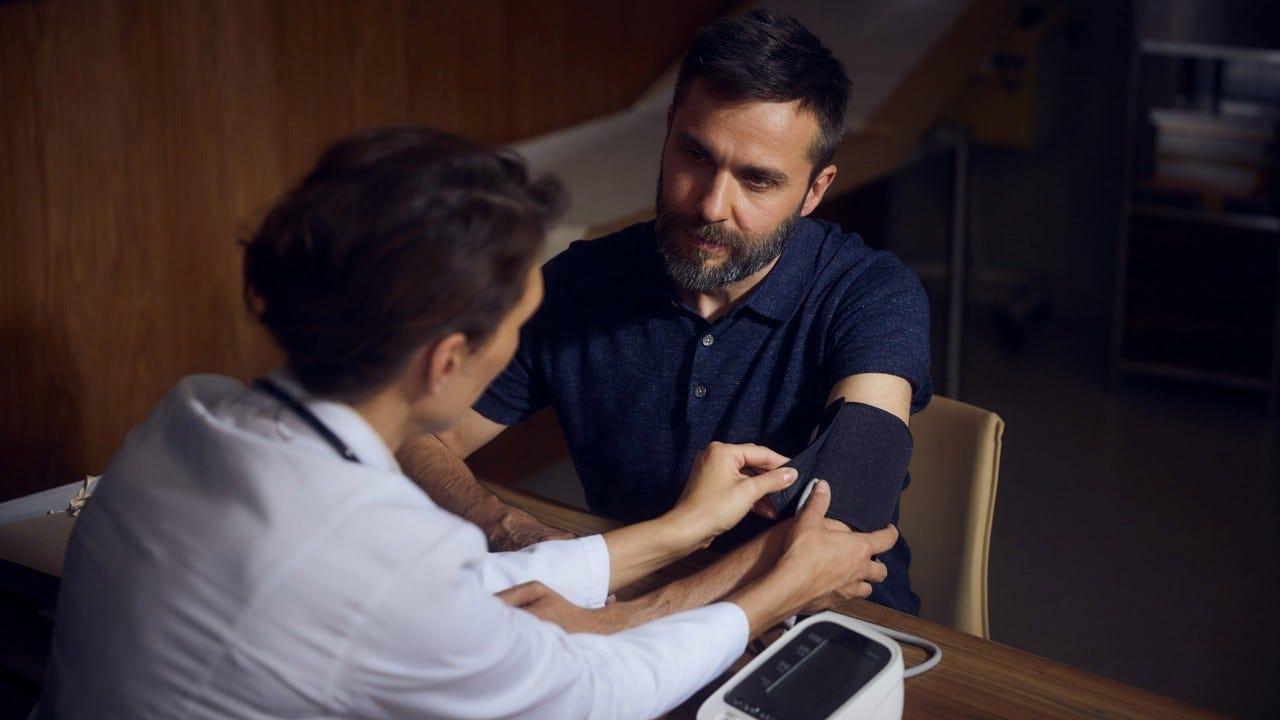What is classed as an emergency and what not?
Many A&E departments are being pushed to their limits. What is classed as an emergency and what not? We asked an expert.

Because A&E caters for multiple medical specialities under one roof, is open 24/7, and doesn’t require an appointment or referral by a specialist, more and more people prefer to go there rather than their family practice.
Even when it’s not really necessary – and primarily in the evening or at the weekend when medical practices are closed. In 2021 alone, almost 686, 000 cases were treated in A&E departments in Switzerland.
The problem is that even trivial medical complaints, such as tick bites or a sprained ankle, occupy staff and resources that are more urgently required by real emergencies, such as strokes or heart attacks.
There are many reasons for unnecessary A&E visits. Some people forget to get a prescription during their medical practice’s opening hours, while others worry that their ailment may be more serious than they first thought. If you sometimes need help interpreting your symptoms, the Sanitas Medgate app gives you 24/7 access to rapid help with medical queries.
Four typical cases that aren’t emergencies
-
Tick bites
Why it’s usually not an emergency: although ticks can transmit dangerous diseases such as Lyme disease or tick-borne encephalitis (TBE), the risk can be reduced if you react quickly – by removing the tick yourself.
When should you go to A&E: If you notice flu-like symptoms within six weeks after a tick bite or if the skin around the bite site reddens in a ring – signs of “erythema migrans” – you must see a doctor.
First-aid at home: There are a number of aids that are equally good at removing ticks, ranging from a bank card and tweezers to special tick removers. And, if you have nothing else to hand, a fingernail. It is best to disinfect the area afterwards. Important: do not twist or squeeze the tick, but pull it out as straight as possible!
-
Stings
Why it’s usually not an emergency: it’s normal for the puncture site to hurt, burn, swell and turn red. Bee or wasp stings usually heal without intervention after a few days. Annoying, but not dangerous.
When should you go to A&E: if you are stung on the mouth or in the throat, you should call the emergency service (144) immediately. If your tongue or mucous membranes swell, there is a risk of respiratory distress. Another – albeit rarer – case is an allergy to an insect venom. Typical reactions include a severe rash, swollen limbs, shortness of breath or even respiratory arrest. However, anyone who is allergic to insect bites should always carry an emergency kit with them in summer.
First-aid at home: if the sting is stuck in the skin, you can push it out with a bank card, for example. It also helps to cool the sting to stop swelling and reduce itching.
-
Sports accidents
Why it’s usually not an emergency: anything that’s not a broken bone, be it a sprain, fall or collision, is usually best seen by a family doctor instead of going to A&E, if you need to see a doctor at all. Sports injuries are painful and can often take a long time to heal, but they aren’t usually an emergency.
When should you go to A&E: Spinal injuries should be seen immediately.
First-aid at home: for first-aid for sprains and strains, remember the acronym RICE: R for rest, I for ice (place the ice in a cloth rather than laying it directly on the skin), C for compression using e.g. an elastic bandage, and E for elevation. And then you need to have a little patience.
-
Burns
Why it’s usually not an emergency: containing appliances such as a hob, oven, or kettle, the kitchen can be a dangerous place. Excessive heat – or cold – on the skin can cause thermal injuries. The skin gets red, itchy and blisters start to form. Burns are caused by dry heat, scalds from hot liquid or steam. However, most injuries are usually superficial. Painful, but not an emergency.
When should you go to A&E: burns are divided into four stages: From stage 2 onwards – when lower layers of skin are affected or at least 10% of the body surface – you should see a doctor immediately. It’s just as important to seek immediate medical assistance if you’ve inhaled smoke or injured sensitive areas of the body, such as the head, hands or genitals.
First-aid at home: the affected areas have to be cooled immediately. It’s best to hold them under running tap water that’s not too cold for a few minutes. Cooling for longer does not reduce the damage. Don’t lay ice cubes directly on the skin – that will only make it worse.
Ask an expert
Mr Bingisser, when I go to A&E in Switzerland, how sure can I be that I will get fast treatment when I need it?
If it’s a real emergency – very sure! Based on various criteria, we sort patients quickly and accurately directly at the door. It’s not first come, first served: we prioritise by urgency. A person who comes with chest pain or breathing difficulties will be seen first. Mortality after a heart attack or stroke has fallen dramatically in recent decades. If I have nine false alarms out of ten cases in A&E, but can save a person’s life, that’s a great success! So all the discussion about overcrowded A&E departments should not put an emergency case off coming to us at all.
Is convenience or ignorance the reason why A&E waiting areas fill up with trivial cases?
If everyone was able to interpret and treat their symptoms correctly, doctors would be out of a job. The problem isn’t the individual patients, but the healthcare system itself. Overcrowding in A&E is caused by the severely limited opening hours of medical practices, and the fact that many family doctors are no longer adequately trained in emergency medicine. And many people don’t have the health education needed to distinguish between an emergency and a minor injury. That’s inefficient. Although being treated in A&E isn’t as expensive as seeing a specialist, it is significantly more expensive than seeing a family doctor.
How can you tell if it’s an emergency?
Breathing difficulties, chest pain, severe pain in the upper abdomen, acute, very severe headaches or functional impairments such as paralysis should always be taken seriously. Sudden dizzy spells are especially dangerous for older people. Ask yourself the question: Am I young and otherwise healthy? If the answer is yes, most symptoms can usually wait until your medical practice is open the next day.



